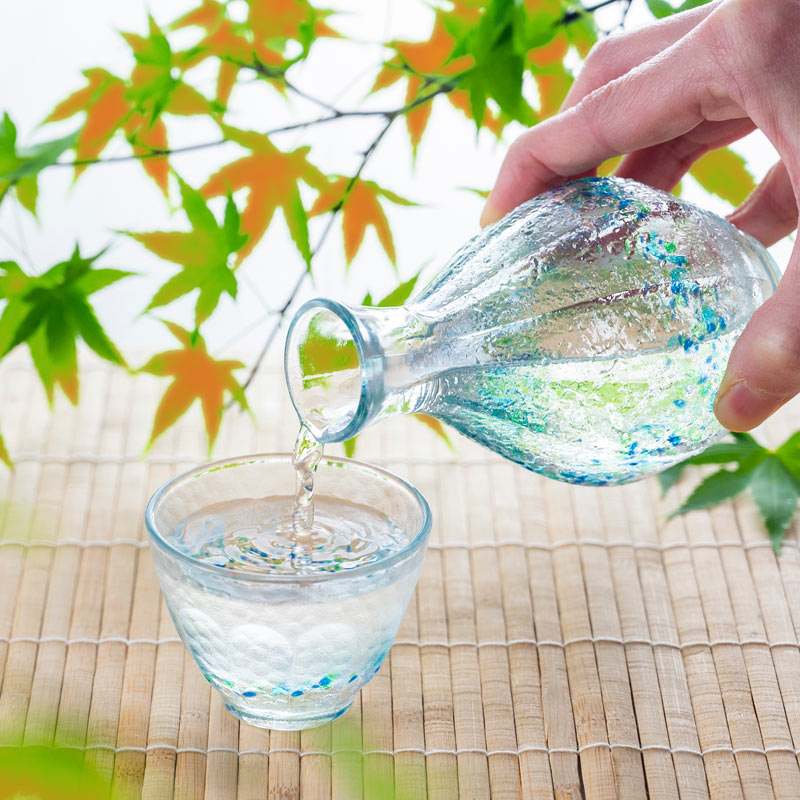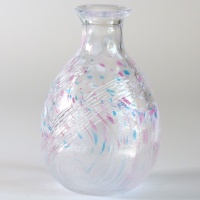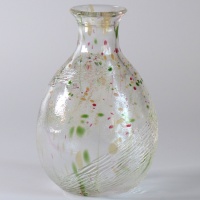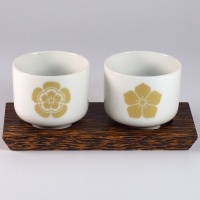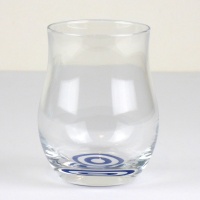As the evenings grow darker and the first autumn leaves begin to fall, many of us look for small rituals that bring comfort and warmth at home.
In Japan, the changing of the seasons is often marked by food and drink traditions that bring people together. And one that feels really special at this time of year is sake, a drink that’s enjoyed at vibrant celebrations with friends or warmly savoured at home.
Just as autumn invites us to gather in cosy spaces, sake carries with it a sense of custom, connection and the simple pleasure of slowing down.
What is sake?
Before we explore how to enjoy sake at home, it helps to understand what sake really is. Often called Japanese 'rice wine', sake is in fact a brewed beverage more like beer. With centuries of tradition behind it, sake has developed into many styles each offering its own character depending on how it’s served.
Sake is Japan’s national drink, brewed from rice, water and a special type of yeast. Unlike wine, which is fermented directly from fruit sugars, sake is created through a gentle brewing process that unlocks the natural starches in rice and transforms them into delicate flavours.

The real beauty of sake lies in its variety. Some sakes are crisp and light, perfect for sipping chilled in summer, while others are rounded, mellow and best enjoyed gently warmed when the weather turns cool.
This versatility makes it a drink for all seasons, though in autumn and winter it feels especially comforting and relaxing.
When to drink sake
In Japan, sake is often tied to the rhythm of the seasons and the flow of daily life. It’s a drink for celebrating special moments like New Year gatherings, weddings and festivals. But it’s also brought out for quiet evenings, alone or when friends or family come together over a meal.
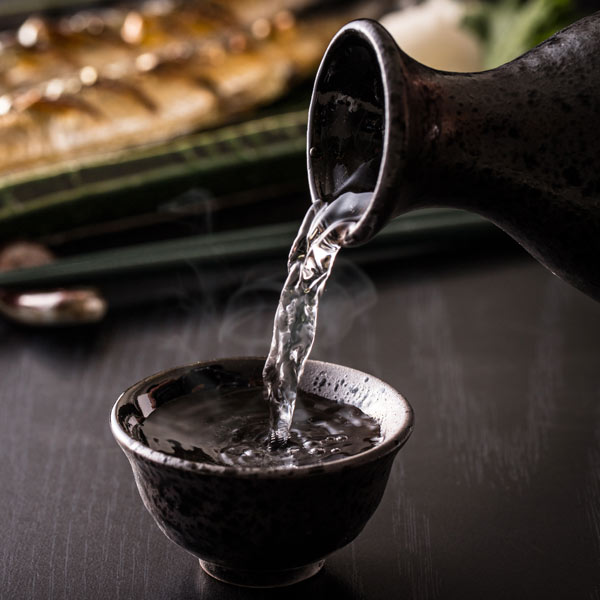
As the colder months arrive, warmed sake becomes especially popular. Sharing a hot meal with a small cup of sake is one of those simple seasonal pleasures that feels both comforting and celebratory.
It’s not unusual to enjoy a glass at the izakaya (Japanese pub) after work or at home as part of an autumn or winter dinner. The act of pouring for one another turns it into more than just a drink, it becomes a way of showing care and connection to your friends and colleagues.
How to drink sake
Sake is a drink that changes with the seasons and part of its charm is how the temperature transforms its flavour and character.
Warm sake (atsukan 熱燗)
As days grow chilly, many people enjoy their sake gently warmed. The heat softens the flavours and produces a smooth, mellow taste that feels like a small comfort in your hands on a crisp evening. It pairs beautifully with heartier foods like grilled fish, seasonal mushrooms and stews, making it perfect for autumn and winter dinners.
Room temperature sake (jouon 常温)
Some sakes are best enjoyed at room temperature, offering a balanced, nuanced flavour that allows the rice’s natural sweetness to shine. This is often the choice for casual home meals or quiet moments of reflection.
Chilled sake (reishu 冷酒)
Though typically drunk through the warmer months of spring and summer, chilled sake can be delightful any time of year with lighter dishes, like fresh salads or sashimi. Its crispness is refreshing and provides a gentle contrast to richer seasonal foods.
Drinking sake slowly, whether warmed or chilled, encourages mindfulness and appreciation - a pause in the day to savour both the drink and the company you share it with.
Serving sake: Cups, jugs and small rituals
One of the joys of sake is not just the drink itself but the simple customs around serving it. Little rituals like this are so common in Japanese food culture and can transform an ordinary moment into something memorable and comforting.
Use a tokkuri (sake jug)
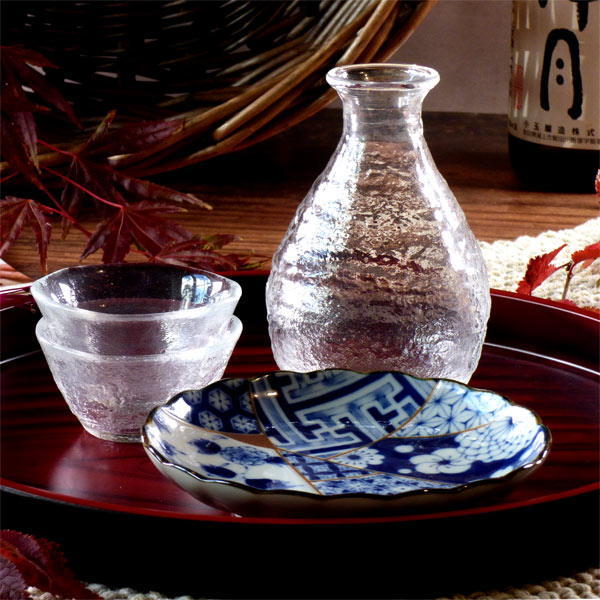
Traditionally, sake is poured from a small ceramic or glass jug called a tokkuri. For warm sake, the tokkuri is gently placed in hot water to reach the perfect temperature. Serving warmed sake in this way invites you to slow down and enjoy the moments of preparation.
Drink from ochoko and guinomi (sake cups)
Sake is sipped from small cups, again encouraging you to take your time and to enjoy each mouthful. Choosing a cup that feels pleasing in your hand, whether smooth ceramic or delicate glass, adds to the sense of care and connection.
Serving etiquette
In Japan, it’s customary to pour for others rather than oneself. Offering sake to friends or family is a gesture of care, and raising your cup together with a convivial “kanpai!” marks the moment as special. Even in a casual home setting, following this simple etiquette adds warmth and thoughtfulness to the experience.
*
Spend time on presentation
Serving your sake on a small tray elevates the drinking experience even further. A beautifully arranged tray, with the jug, cups and perhaps a seasonal touch like a sprig of maple or eucalyptus, turns sake drinking into a mindful autumn ritual. It’s a simple way to make cosy evenings at home feel special, whether you’re sharing it with loved ones or just treating yourself.
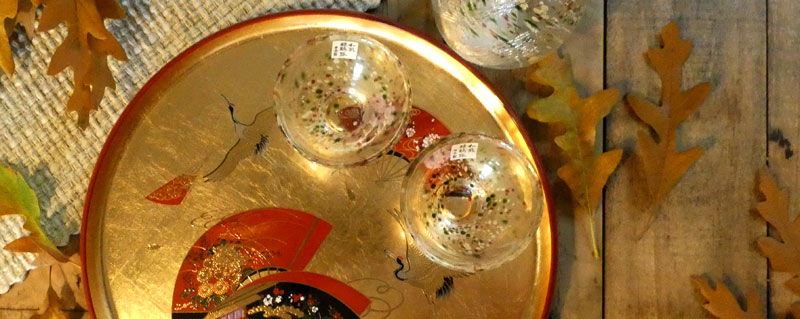
Even observing some of these small touches, such as feeling the warmth of the sake jug or sipping from a genuine sake cup, the presentation and time-honoured customs bring a sense of ceremony and calm that’s at the heart of Japanese seasonal traditions. They remind us that enjoying sake is as much about connection and mindfulness as it is about the taste.
Warming sake at home
Holding a warm cup of sake on a crisp autumn evening really feels like a comforting treat. Warming sake at home is easy and the gentle heat preserves its smooth, mellow flavours.
- Choose your sake: Not all sakes are best warmed. Medium-bodied, mellow varieties tend to have the best flavours.
- Heat gently: Pour the sake into a tokkuri (ceramic or glass jug) and place it in a small pan of hot water. The water should be warm, definitely not boiling, and the sake should never be heated directly over the stove.
- Check the temperature: After a few minutes, test by gently touching the jug - it should feel pleasantly warm, not scalding. The sake should not be heated to more than 60°C as the flavour will be ruined.
- Pour and enjoy: Serve into your favourite ochoko or guinomi. Take a moment to appreciate the subtle aroma and sip slowly.
*
This simple process transforms drinking sake into a mindful, comforting experience. On chilly days, warming through the sake offers not just physical warmth but a sense of calm, a pause to savour the season and a small way to connect with Japanese tradition.
Pairing sake with autumn foods
While you’re enjoying your drink, why not pair it with some seasonal Japanese food? One of the joys of sake is how well it complements the flavours of the season. In autumn in particular, hearty, earthy dishes feel especially comforting when paired with the right cup of sake. For example:
Grilled fish: A lightly warmed sake enhances the delicate smokiness of grilled mackerel or salmon, creating a gentle, satisfying harmony.
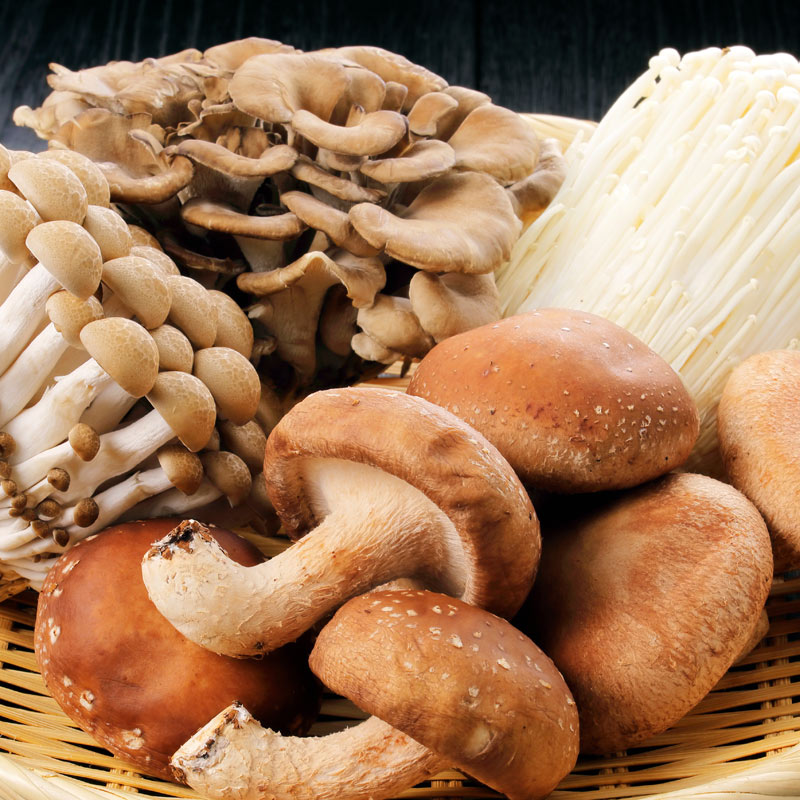
Mushrooms and root vegetables: The mellow, umami-rich flavours of shiitake, matsutake or delicious roasted sweet potatoes are beautifully lifted by a smooth, warm sake.
Japanese stews and hot pots: Hearty dishes like oden, nabe or beef stew pair perfectly with mellow sake, creating a sense of comfort that fills both body and spirit.
Seasonal treats: Chestnuts, roasted kabocha squash and other autumnal snacks can be enjoyed alongside chilled or lightly warmed sake for a simple ‘oishii’ indulgence.
By choosing seasonal ingredients and thoughtful pairings, you can create your own little autumn ritual and feel connected to Japanese culture. Take a moment to slow down, share food and drink, and savour the warming flavours of the season.
Kanpai to cosy autumn evenings
As the days grow shorter and the evenings turn crisp, a cup of sake offers a welcome pause, a small ritual and a connection to both Japanese tradition and the season. Whether gently warmed in a tokkuri, poured thoughtfully for friends and family or just enjoyed quietly at home, sake turns ordinary moments into ones that are relaxing and worth savouring.
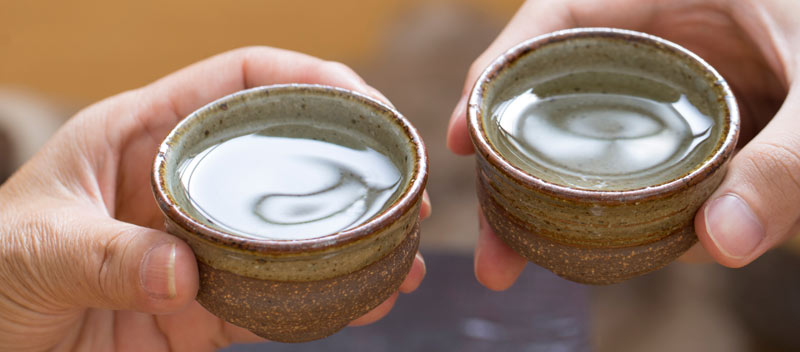
Autumn invites us to slow down, appreciate simple pleasures and gather round with food, drink and mindful presence. With the right cup in hand, a warming sip of sake becomes a little celebration of the season, a quiet toast to comfort, reflection and the joy of being here now.
'Kanpai!' to cosy evenings and to creating your own autumnal rituals at home.


